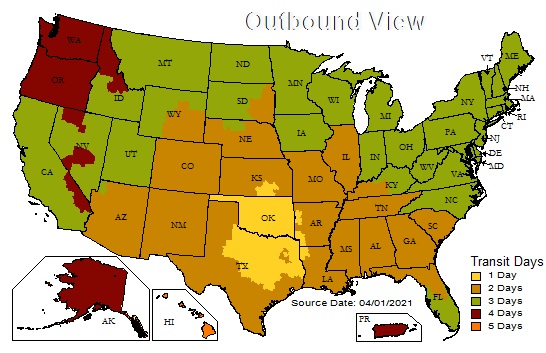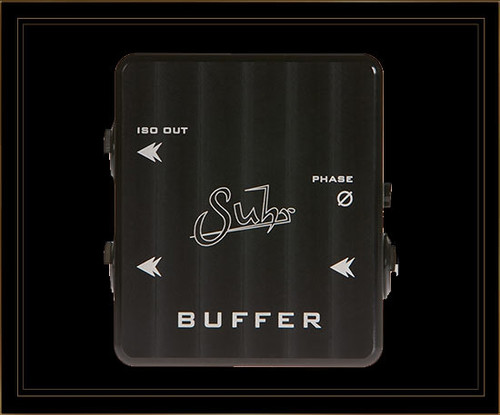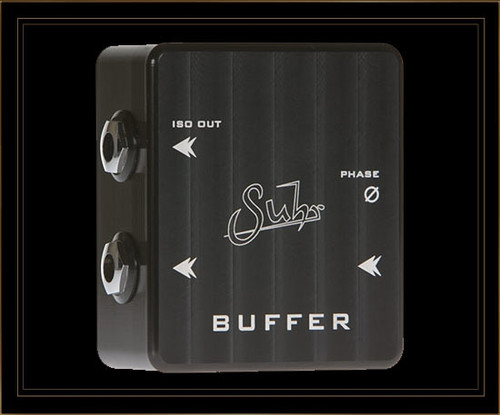For over a decade, every buffer that's come out of Vertex Effects has been custom made, bespoke, for the pedalboard it was designed for or the customer that ordered it. Needless to say, their buffers were very limited, with only a few hundred made over the last ten years. Over that time, and through hundreds of custom buffer interfaces being made, several common applications for buffer combinations and routing emerged as the most common uses as it comes to placing buffers on a pedalboard for the most optimal results. Routing schemes such as mono, stereo, audition loops (inserts), four-cable method, five-cable method, and wet/dry/wet were all common requests from customers, but there was never an all-in-one solution that provided all of these options for buffering and routing your pedalboard in a pedalboard-friendly enclosure - until now.
Introducing the Vertex Buffer Interfaces and Buffer Modules. The first all-in-one solution that covers 99% of all pedalboard routing options, whether you have multiple amps, amps with effects loop, a wet/dry/wet rig, an impedance sensitive fuzz, or want to side-chain pedals off the board in the middle of your signal path with an insert loop, these boxes have a solution for you that won't compromise on tone.
Vertex buffers are designed to have no sound of their own - totally transparent, no color, no EQ, no distortion - just your tone as though you plugged your guitar directly into your amp with a 10ft cable (even if you're running a dozen or more pedals between the guitar and amp with over 100ft. of cable). Often buffers will be described by the manufacturers with words like "warm" or "fat" when really the buffer should NOT be imparting anything to the sound other than 1) loading the guitar pickups properly with the same loading as your guitar would see if plugged into a tube amp and 2) converting the signal to low impedance, driving the line so it is the least susceptible to environmental factors that might alter the tone. Unfortunately, 99% of the buffers available on the market don't do this - they add a color to the signal and lack the proper specifications to drive even 20 feet of cable without introducing artifacts into the sound.
Vertex buffers are built to the highest standards with the proper specifications for guitar signals: 1M ohms input impedance, 100 ohm output impedance (10x lower than the industry standard of 1K ohms), the lowest possible noise, and the highest possible headroom (running 12V rail to rail or essentially ~24V internally). Beyond that, they custom made their own isolation transformer, providing players total galvanic isolation for their multi-amp set-ups, with the highest amount of transparency (most transformers significantly color the tone, and often are input transformers designed to be next to your amp's input, not the output of the pedalboard), while rejecting the maximum amount of hum caused by ground loops that may be present in your rig. Additionally, Vertex provides a polarity switch for the transformer that allows you to correct any phase issues that might occur when running multiple amps at the same time.
ROUTING OPTIONS & CONFIGURATIONS
- Mono
- Split Mono
- Stereo
- Four Cable Method (amp with effects loop)
- Five Cable Method (stereo amps with effects loops)
- Wet/Dry
- Wet/Dry/Wet
- Audition Loop (insert)
- Passive Input (for Fuzz)
In addition to the wiring diagrams above, both the Buffer Interface and Buffer Module include a QR code that's laser-etched into the enclosure, showing you all possible wiring and signal routing configurations.
HOW MANY BUFFERS ARE INCLUDED?
Four (4) total buffers. An input buffer on the GUITAR input (1), an output buffer for the LEFT amplifier - mono (2), an output buffer for the RIGHT amplifier - stereo (3), and an output buffer for the RETURN of the effects loop (4). Of course, you may not need to use all four buffers, refer to the routing diagrams here to optimize the number of buffers needed for your desired signal path. There is also a passive input available on the SEND if you have a Fuzz or impedance sensitive device and still want to have the option of using all four buffers.
BUFFER INTERFACE vs. BUFFER MODULE
There is no difference. In fact they're both the exact same circuit and circuit board. The only difference is the metal enclosure that they're loaded into. The BUFFER INTERFACE enclosure is designed for literally any guitar player using any brand, make, or model pedalboard. It's a traditional size enclosure (similar to a Hammond 1590BB) that can be mounted anywhere on your pedalboard or even have other pedals stacked or velcroed on top of it to maximize space.

We are open Tuesday-Saturday from 10am until 6pm CDT.
Any order placed before 3pm CDT Tuesday through Saturday is processed for shipment the same day. Orders placed Sunday-Monday will be processed for shipment the following Tuesday.
For Free Shipping items, Effects pedals and small goods items are generally shipped via USPS Priority Mail, and Guitars and Amplifiers are generally shipped via UPS Ground.
Due to our central location in the middle of the US, most orders will be delivered within 1-3 days delivery time.
Other shipping methods are available (at an additional cost), including next day air.
Please call us directly at (972)540-6420 if you have any questions regarding shipping for your order.
































